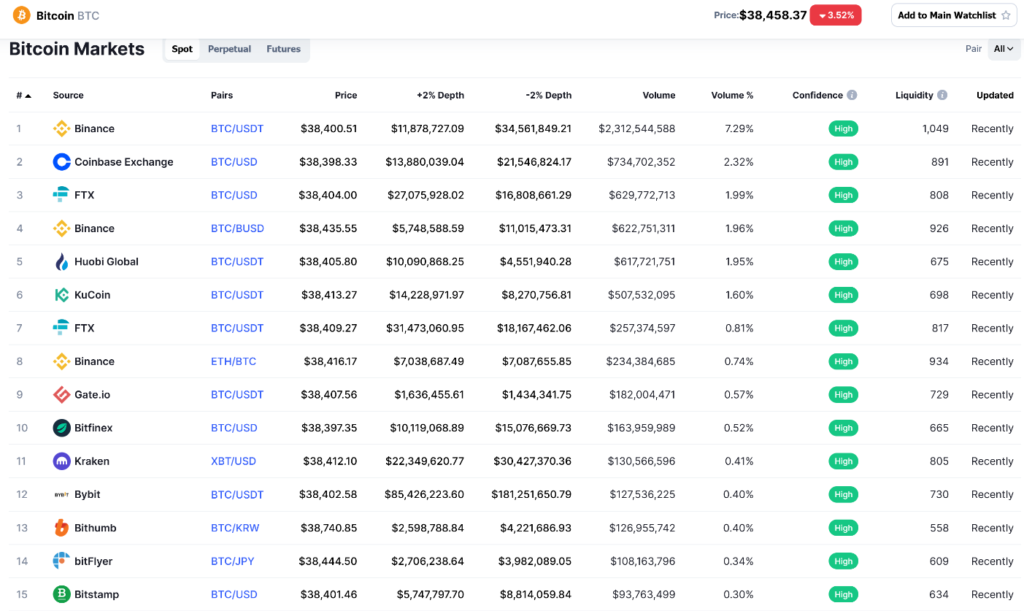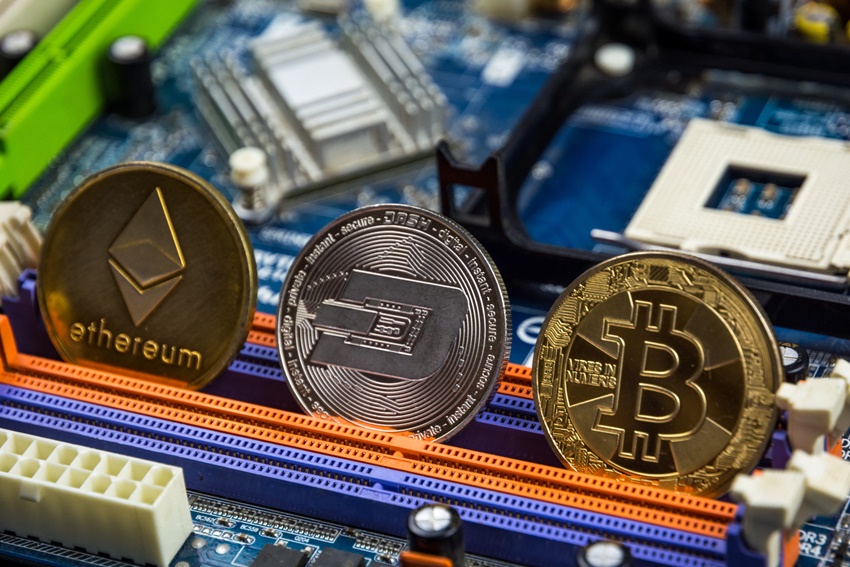Fundamental analysis is the de facto strategy when picking stocks. Everyone’s strategy will differ but a certain set of basic analyses are typically universally applied, such as looking at the company’s quarterly financial reports, income statement, balance sheet, statement of cash flows, credit ratings, dividends, financial ratios, and so on. However, when it comes to cryptocurrencies, we can’t apply the same fundamental analysis to help you pick a winner – it simply doesn’t work like that. Don’t worry, though; we can still apply fundamental analysis when researching cryptocurrencies, and we’ll show you how. Protect yourself from crypto scams, pump and dumps, and Ponzi schemes by doing research.
Traditional Fundamental Analysis Doesn’t Work With Cryptocurrencies
First, let’s adjust our frame of thinking and approach to researching cryptocurrency by identifying the two main differences between traditional fundamental analysis and a crypto-focused one. With traditional fundamental analysis, in addition to a company’s financial statements, investors will look at the business model, competitive advantage, management, corporate governance, customer base, market share, industry impact, competition, regulation, and business cycles to try and determine its value and growth potential. Public companies make it easy to do fundamental analysis because all of the information is publicly and regularly available. Meticulous quarterly statements are announced to ensure that shareholders and the SEC are both happy.
Cryptocurrencies are still considered new to the financial world, so this makes defining what they are a question mark. Is it a security, commodity, or currency? Even the SEC has trouble defining what it is – and rightly so. Because the underlying technology and use case for each cryptocurrency may vastly be different (ie. Stable coin, meme coin, governance token, etc.) its definitions, recognitions, and treatments from Uncle Sam’s perspective are still a work in progress. Coupled with the fact that cryptocurrency projects are by and large not a company nor does it have a traditional business structure, there simply isn’t the same type of data available when compared to evaluating stocks.
Naturally, this means the way we value these cryptos has to be different from each other. Its decentralized nature means that there are no quarterly earnings reports or financial statements to analyze. Additionally, due to their nascent technological properties, economic impact and relevancy are still being evaluated. Therefore, going down the traditional financial analysis checklist doesn’t necessarily work with cryptocurrencies, though we can borrow some of the strategies and look at other metrics to help us choose the right investment.
Approaching Cryptocurrency Fundamental Analysis The Right Way
Since the vast majority of cryptocurrencies don’t fall under regulatory or shareholder scrutiny, identifying a legitimate project with growth potential can be detected fairly easily with the combination of the right data points and some due diligence in researching each project. The vast majority of cryptocurrency projects do not report quarterly statements but we can still take a look at other publicly available information to factor into the fundamental analysis. For our approach, we will break it down into two main sections: quantitative and qualitative data.
Quantitative Data
Quantitative data tells us the hard numbers in a crypto project such as market capitalization, liquidity, volume, supply mechanisms, and active addresses. With these, we can determine the health of the project, performance over time, and overall interest. Data aggregation platforms such as CoinMarketCap, Defi Llama, and Messari are popular first stops for crypto investors. Each site has its features and they will differ in the data that they track or how they present the information. Make sure that all three sites are used in conjunction to create an overall picture.
Market Capitalization
The first metric to look at is market capitalization which can be calculated by taking the current price per coin and multiplying it by the circulating supply. CoinMarketCap shows that Solana’s current price is $96.09 while its circulating supply is 333,700,162.30 SOL which equates to a $32 billion market cap. While this number alone doesn’t tell you much you can see how the price fluctuated in the past years. The price of SOL was $0.62 in April 2020, was $38 in April 2021, and is currently $96. Though these prices don’t reflect the true value of the cryptocurrency, we can see how the markets are pricing them on the open markets.
Trading Volume And Liquidity Data from 2022
Market capitalization should be taken with a grain of salt when looking at it by itself. However, pairing this with trading volume provides a better understanding of whether the price is worth what it is because volume indicates the crypto’s market strength. A large trading volume indicates that people are actively trading the crypto, which ultimately translates to investing and trading interest.
Taking a look at Bitcoin on CoinMarketCap, we can see that it is being traded daily across multiple exchanges. We can also see that the 24h volume across the exchanges ranges anywhere from hundreds of millions to billions. With any of these exchanges, liquidity isn’t a problem either for this coin as indicated by the liquidity rating. The volume % across the board isn’t so high which makes sense because most investors want to hold Bitcoin, rather than trade them. It also makes sense that the dollar value in volume is high across the board due to Bitcoin’s price hovering around $38 thousand per coin.

Source: CoinMarketCap
ApeCoin (APE) on the other hand shows a relatively higher trading volume % across the board which indicates that, while this coin is being actively traded, it isn’t being held on to as much as Bitcoin. This would indicate that this coin isn’t exactly a HODL coin. Liquidity scores are also relatively high so you can be sure that selling this coin when the time comes shouldn’t be a problem.

Source: CoinMarketCap
CoinMarketCap also has historical data snapshots of some of the top coins going as far back as 2013. Using this tool, we can see the differences in global trading volume between years. For example, XRP’s global trading volume increased from $492 million in 2019 to $1.16 billion in 2020 then to $5.1 billion in 2021. Though we shouldn’t look at this upward trend to make any projections on future volume, it does give us an insight that this coin’s trading volume, and therefore interest, is increasing over time. An altcoin like ApeCoin was just released this year so there is no historic data to tell us if interest has increased or not.
Supply Mechanisms
Another factor that investors should pay close attention to is supply mechanisms. The law of supply and demand tells us that when a coin’s supply is low the demand is high and the price rises. Most Bitcoin holders aren’t trading BTC because of the limited supply. Bitcoin’s supply is maxed out at 21 million and with a yearly issuance rate of 1.94%, Messari projects the supply to be 90% mined by 2050.
AVAX has a max supply of 720 million but because AVAX holders govern how quickly new coins are minted, the inflation rate isn’t easy to estimate. The estimates on Messari’s site don’t factor this in so their projections wouldn’t be accurate for this project. You wouldn’t know this unless you investigated how their coin is created though. It is therefore important to understand the project’s tokenomics (typically found in the whitepaper or website) of each project and cross-reference the data with aggregation sites like Messari. However, we can still determine that this coin will become more scarce and valuable over time as long as their project is economically relevant.
Active Addresses
The number of active addresses can indicate user interest in a crypto project. Using Messari to take a look at Cardano, we can see that there are currently over 103,000 active addresses. This number by itself doesn’t mean much but when we see how it compares to one or two years ago, it shows a clear signal that investors are becoming more interested over time – especially in recent years. We’ll need to see why this could be by correlating this information with qualitative metrics (more on this later).

Source: Messari
Total Value Locked And Protocols
The total value locked (TVL) is the total overall value of the cryptocurrencies deposited in a DeFi protocol. With over $206 billion locked across various protocols, DeFi has grown to be the most active sector in the blockchain space. Knowing where your cryptocurrency of choice stands in the TVL pie can give insight for gauging interest. Defi Llama shows that Ethereum takes the lion’s share of the pie, with its current TVL hovering at $113.93 billion.
Taking a look at the total value locked of all chains over time, however, shows us that their market dominance is decreasing. Search for your coin of choice on Defi Llama to determine what its TVL is, then see how it changed over time. This should tell you how much crypto investors are pouring into DeFi which ultimately translates to user interest.
While you are there, take note of the number of protocols next to each crypto project. This tells you how many DeFi protocols currently exist that accept or use said coin. Over 473 protocols use Ethereum while only 9 protocols use Tron. You can gauge cryptocurrency adoption by the number of protocols – at least in the DeFi space. However, since DeFi reigns supreme amongst all sectors in blockchain, this is an important data point that should be factored into your analysis. Tracking the adoption growth, say once every quarter, will give you a better picture of adoption over time.

Source: Defi Llama
Qualitative Data
Qualitative data describes the non-quantifiable information such as project utility, team, competitors, roadmap, tokenomics, and audit. Since the qualities of the crypto project are evaluated, there will always be some subjectivity baked into the fundamental analysis. However, supplemented with quantitative data, the qualitative data makes for a much more informed and rounded fundamental analysis. The goal here is to understand the crypto’s main objective, vision, and culture, and the best place to start is to take a look at the project’s website, whitepaper, and social media accounts.
Project Utility
What is the purpose of the coin and does it have utility? Traders won’t care about these attributes but investors need to. Without a legitimate use case, there is no potential for mass adoption which means the project won’t last long. Taking a look at a project’s website can give you a high-level understanding of what the project is trying to achieve so this should be your first stop. Somewhere on the website, you should find the project’s whitepaper but if you can’t, think twice about making any type of investment in it.
The whitepaper will outline in detail what the project is about, how it was formed, what its mission is, and most importantly – what type of utility its coin or token has. Cryptocurrencies don’t have longevity in the markets or any ecosystem unless it has a useful and necessary utility. Bitcoin reigns supreme because its utility is to become the world’s digital currency. Ethereum’s native cryptocurrency Ether acts as the fuel that drives transactions on DeFi protocols. Dogecoin on the other hand doesn’t have any utility.
Bitcoin and Ethereum’s prices increased over time as the world embraced their utility. Dogecoin was created in 2013 and to this day has never recovered from its price crash. This isn’t surprising because it was created as a joke coin. These days the project is trying to create uses cases for it as a form of digital currency but the damage was already done and transforming it into a real cryptocurrency will undoubtedly be an uphill battle.
Detecting Crypto Scams Tip #1: Cryptocurrencies without utility aren’t necessarily scams but you should proceed with caution.
Team
Though Bitcoin was created by an anonymous developer, these days legitimate projects will always have a fully doxxed team. Because there are so many scams out there, especially in the DeFi space, knowing who the developers are is an important line of defense from scams. Make sure that founders and team members say who they say they are by checking their profiles on LinkedIn, Facebook pages, and Instagram. Pay close attention to who they are following, who follows them, their work, and their education history.
Most crypto projects will do a few live AMA (ask me anything) sessions where anyone can ask questions. There you can physically see that their face matches up with their profiles. This level of transparency is typically a good sign and shows investors that they have nothing to hide.
Detecting Crypto Scams Tip #2: If the team information is missing in a whitepaper and website, steer clear!
Competitors
Is the project similar enough to an already existing project? Does it have what it takes to gain some of its market shares? After figuring out what the project is about and what utility it has, you will have to determine if your chosen crypto can stand on its own or if it has a chance of surviving. Unfortunately, there is no easy way to determine if a crypto project is competing with another without doing some research.
Binance Research makes skimming through projects on the high level a bit easier though. Instead of going through potentially hundreds of pages of random whitepapers simply go to their site and speed-read through the different projects. They have organized all the important information into bite-sized information so it should help you with assessing and comparing projects faster.

Source: Binance Research
Roadmap
The roadmap shows what the project intends to do over some time. Typically, you can spot larger projects that have roadmaps that span a few years. Major milestones such as deploying test nets, new feature releases, AMAs, airdrops, exchange listings, and partnerships will be posted on their roadmaps. If the project already started, take a look at their website and social media pages and see if they completed their past milestones while taking note of how long it took.
It isn’t uncommon that projects are delayed so don’t expect perfect on-time accomplishments. As long as they delivered on their promises in a reasonable time, you should feel confident in their activities and future promises. If a project doesn’t have a roadmap, then this should be a red flag since it is telling you that it has no intention of further development.
Detecting Crypto Scams Tip #3: Consider it a red flag if a project doesn’t have a roadmap. Roadmaps that are sparse are suspicious as well so take caution.
Tokenomics
As we’ve touched on before, tokenomics tells us how the coins or tokens are created. It also lets us know how it works in the crypto economy. Tokens typically serve as a utility, governance, or fundraising asset. The whitepaper will contain the tokenomics and outline it in technical detail. Though it can get a bit technical, work through the math and token’s flow to try and understand where and how the token is issued and distributed.
The tokenomics should be clearly explained and all of the math should work out. Pay close attention to how much the founders and developers are making from each token transaction. Also, take a look at how much is allocated to the investors. Investors may have a cliff or vesting schedule to ensure that they don’t pull out of the project early.
Detecting Crypto Scams Tip #4: Study the tokenomics in detail because it can reveal signs of a weak token economy or one that has the potential for a rug pull.
Audit
Not all crypto projects are audited so a lack of one shouldn’t be a reason not to invest. When it comes to DeFi projects, however, an audit is a must. Some of the notable auditing companies include Certik, Haze Crypto, Chainsulting, and OpenZeppelin. Check out their websites and they will have the projects that they have audited. Typically this isn’t necessary as projects will proudly display the audit report on their website or whitepaper.
Detecting Crypto Scams Tip #5: Specifically for DeFi projects, if it doesn’t have an audit completed and passed, then avoid it at all costs!
Investing The Right Way Is The Only Way
Cryptocurrencies are without a doubt an excellent investment opportunity given that the proper fundamental analysis is performed beforehand. The quantitative data is only half of the puzzle. Without the qualitative data, proper research would not be possible. Although the sections in this article cover important data points to research, it is by no means all-inclusive. It does, however, cover the basics which should help you on your journey. This post was written by Ironsung on Fiverr. I hire Fiverr writers who are proficient in the fields they write about so that we can all learn more. Subscibe for more investing posts. Have a lovely day.
Disclaimer
I want to make it unequivocally clear that I do not promote any cryptocurrency, nor do I endorse any crypto investments. This website is dedicated to providing information and insights into the world of cryptocurrencies to help you better understand what crypto is. If you ever find yourself in a position where you need to explain your decision not to invest in cryptocurrencies to friends or acquaintances, you can use the content on this site as a guide to discourage people from falling victim to scams or making hasty financial decisions. My ultimate goal is to empower individuals with knowledge and awareness so that fewer people become financial victims. Life is already challenging with its inherent obstacles; we don’t need the added burden of unscrupulous individuals looking to exploit our hard-earned money. Stay vigilant, stay informed, and make financial decisions with caution. Your financial well-being is of paramount importance, and it is my sincere hope that the information here can assist you in making prudent choices.











